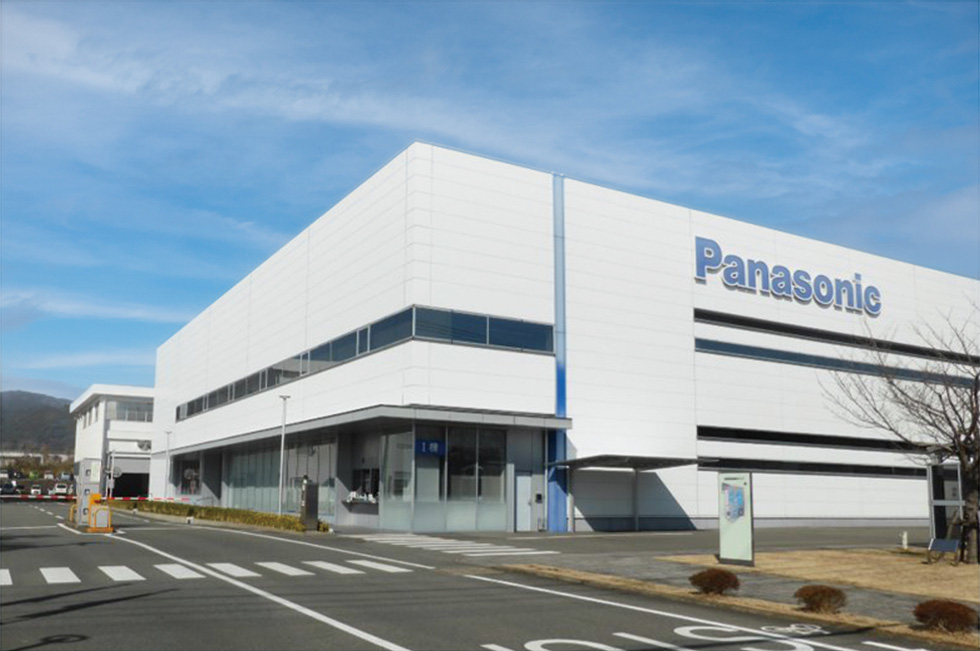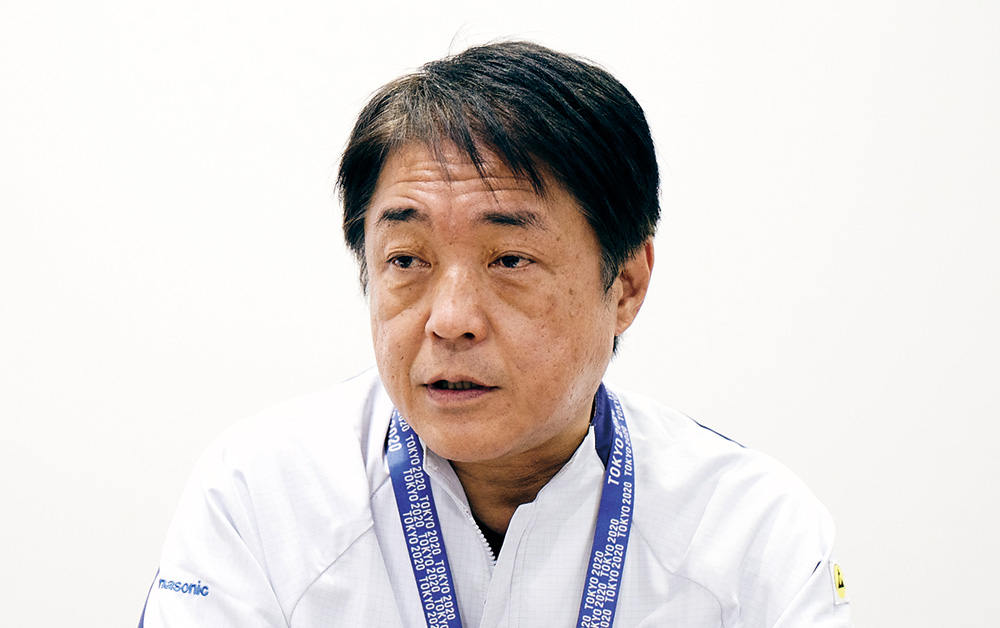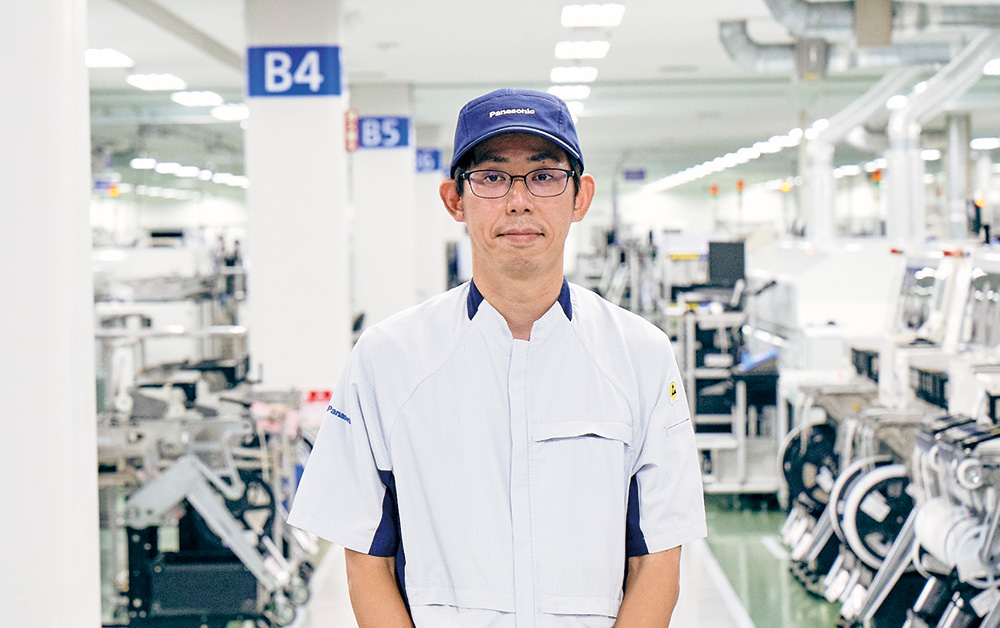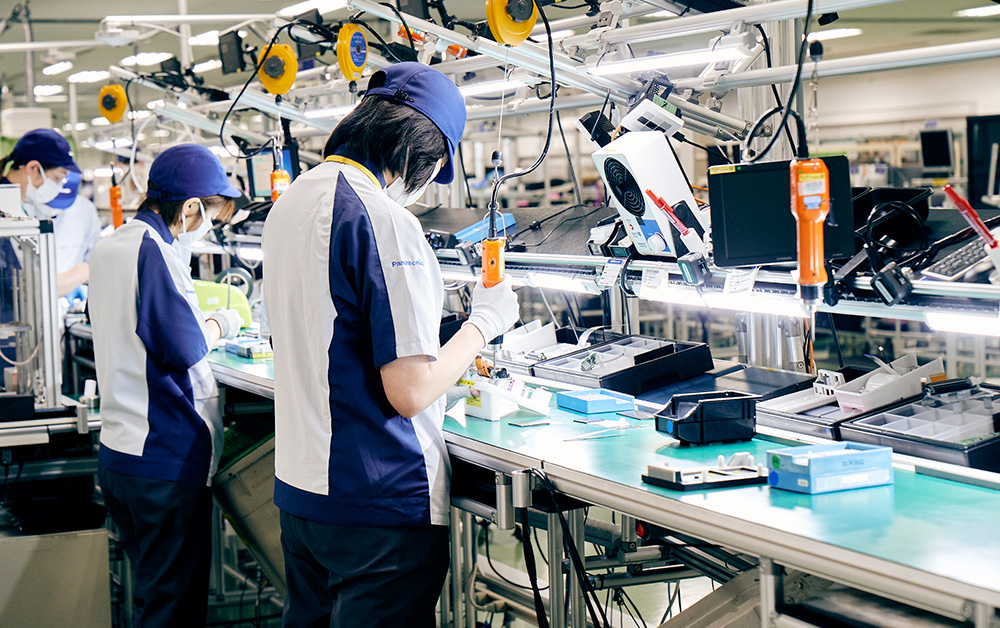



Optimize “variable-type, variable-volume manufacturing” with cutting-edge technologies
Tosu City (Saga Prefecture) is close to Fukuoka City and important transportation nodes of national roads and railways. The city's population is the third largest in the prefecture after Saga City and Karatsu City. Sagan Tosu, a J-League football team, has its home ground adjacent to the station. The factory in Tosu City started operation in 1964. About 200 people work at the factory that is under the direct control of Panasonic Connect. Since the 1980s, various products have been transferred to this factory from all over Japan. They mainly manufacture BtoB products. The factory is characterized by its “variable-type, variable-volume manufacturing” which is used to manufacture a variety of products in quantities and lead times requested by customers. While they produce a huge number of products, 70% of the lots are less than 100 units, which requires frequent switchover between different models. In order to efficiently manufacture hard-to-automate products of varying types and production volumes, they have promoted thorough visualization and digitization of the site by using the Internet of Things (IoT) and others. In recent years, the company has been promoting innovation in manufacturing through full-scale use of a cyber-physical system (CPS).
Optimization of production plan by CPS

Toshiya Takahashi, Factory Manager, Saga Factory, Panasonic Connect Co., Ltd.
“We have been reviewing our manufacturing from the beginning”, said Toshiya Takahashi, Factory Manager, Saga Factory, Panasonic Connect Co., Ltd. According to him, the factory produces a variety of products, each with a different lead time per user. The manufacturing site tends to anticipate the future and continues manufacturing beforehand even if without a purchase order. However, this leads to asynchrony between manufacturing processes, resulting in unnecessary inventory. How to solve these various issues? In order to solve the issues including delivery date, “we had reached a point where we could no longer do it by human labor”. Therefore, in 2018, they began reviewing manufacturing from the standpoint of inventory control. In that project, they also tied to introduce a cyber-physical system (CPS) as one of the features of the factory, while collaborating with the Technology Division of Panasonic Group, said Shinji Nakagawa, Planning Section. The goal is to optimize the production plan through data-based visualization. Currently, the efforts are expanding from the mounting line to the assembly line. They aim to promote further digitalization of human work through work analysis and assignment of workers according to their skills, etc., by using artificial intelligence (AI) in the future.
Taking Manufacturing to Next Stage with
“Screw Fastening Technology”
“Screw Fastening Technology”

Production line using JUKUREN BLG-BC2
HIOS has supplied products backed by its unique technologies and high quality in one of the basics in manufacturing – “screws”. Katsuyuki Totsu, President of HIOS says, “the further you go into this field, the deeper it gets”. Comparing screws, bits, and screwdrivers to three arrows, he says, “These arrows make one set. We will continue to study them one by one” in their R&D journey. Currently, they are focusing on digitalization of screw fastening. They are trying to achieve screw fastening traceability by providing quantitative data on whether there is any error or something missing in screw fastening, and whether the screws are fastened with specified torque. This is exactly in line with “visualization” and “digitization” being undertaken by the Saga Factory of Panasonic Connect, which has adopted the “JUKUREN BLG-BC2”. With its excellence recognized, more of HIOS’s screws are adopted in the automotive industry in addition to electric and mechanical industries. In September, their “screw fastening systems” won the “Encouragement Award” of the “5th EcoPro Awards” (sponsored by the Ministry of Finance, the Ministry of Agriculture, Forestry and Fishery, the Ministry of Economy, Trade and Industry, the Ministry of Land, Infrastructure, Transport and Tourism, and the Ministry of the Environment of Japan) hosted by the Sustainable Management Promotion Organization (SuMPO). This is because a series of their products that are friendly to the environment and people, such as “Totupla” and “Intrtorque,” which greatly reduce screw fastening errors, and ”JUKUREN,” which reduces carbon emissions by using brushless motors, were recognized as contributing to realize a circular economy. HIOS will continue to commit to the evolution of screw fastening.
“JUKUREN” screwdrivers assist workers

Yosuke Matsuoka, Chief, Manufacturing Technology Section

Production line
A production line for payment devices, the main product at the Saga Factory, Panasonic Connect. They used to have multiple dedicated lines for each model; however, since the production volume varied per model and season, a mixed production line was launched from 2019 to 2020. Currently, a single line produces multiple models. In the line, orange HIOS digital screwdrivers “JUKUREN BLG-BC2” are lined up. The rhythmic sounds of screw-fastening echo in your ears during the operation. Mr. Matsuoka, chief of Manufacturing Technology Section, says, “We adopted this product because it has superior functions and cost performance compared to other companies’ products.” In the past, an on-site leader managed the line manufacturing three models per day. However, as it was difficult to manage all the switching and pacing of work, they are building a mechanism to create and share a database of workers who work at each line and their work history. The line has various on-site ingenuities, such as a feed table to control pacing of work and a pan to manage the number of screws.
(Published on July 10, 2022 issue of NIHON BUTSURYU SHINBUN)


